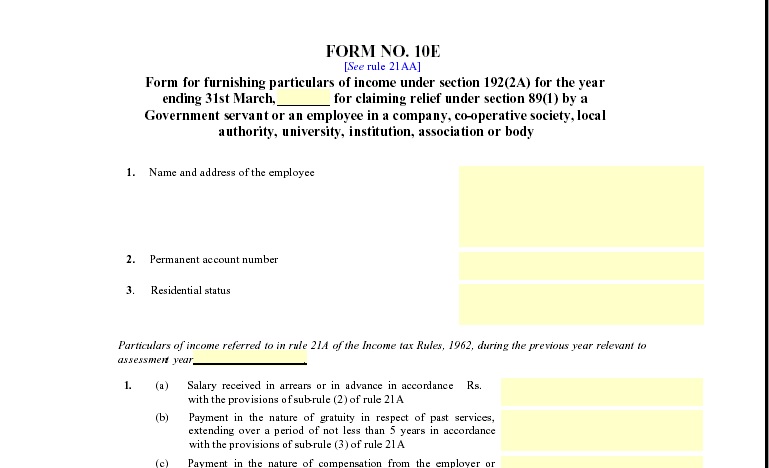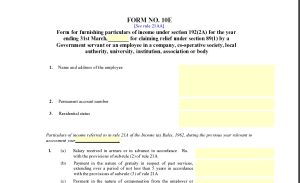Table of Contents
ToggleIntroduction
Have you ever wondered whether keeping your current Home Loan is costing you more than it should? Many people continue with the same lender for years simply because switching feels confusing or risky. However, when done at the right time, shifting your Home Loan can save you thousands of rupees—just like choosing a smoother, faster lane on a long highway.
In this simple, conversational guide, you’ll learn exactly when you should switch your Home Loan, year by year, and how tools like Automatic Income Tax Preparation Software All-in-One with Form 10E can make your financial planning effortless for FY 2025–26.
Before we dive deep, let’s make the navigation easy.
Table of Contents
| Sr# | Headings |
| 1 | Understanding the Need to Switch a Home Loan |
| 2 | How Home Loan Switching Works |
| 3 | Year-by-Year Guide to Switching Your Home Loan |
| 4 | Year 1: Evaluate Interest Rates |
| 5 | Year 2: Check Outstanding Loan Principal |
| 6 | Year 3: Compare Market Offers |
| 7 | Year 4: Consider Tax Benefits |
| 8 | Year 5: Analyse Long-Term Savings |
| 9 | Tools to Help You Switch Smartly |
| 10 | Automatic Income Tax Preparation Software All-in-One |
| 11 | How Form 10E Helps with Tax Relief |
| 12 | Benefits for Govt and Non-Govt Employees |
| 13 | Common Mistakes to Avoid When Switching |
| 14 | How to Decide If Switching Is Right for You |
| 15 | Final Verdict: Should You Switch Your Home Loan? |
1. Understanding the Need to Switch a Home Loan
Many people assume that once they take a Home Loan, they are locked in forever. But lenders frequently change interest rates, and when they do, your loan may become unnecessarily expensive. Switching your Home Loan, also known as refinancing, means transferring your outstanding balance to another lender offering better benefits.
Think of it like shifting from a slow-moving queue to a faster one at a supermarket. You still reach the same destination, but much quicker and with less frustration—and money saved.
2. How Home Loan Switching Works
Switching your loan involves:
- Checking current interest rates
- Comparing offers from other lenders
- Calculating savings
- Submitting documents
- Completing loan transfer formalities
With the right timing, switching is easy, smooth, and financially rewarding.
3. Year-by-Year Guide to Switching Your Home Loan
This step-by-step guide helps you understand when you should consider switching and why timing matters.
4. Year 1: Evaluate Interest Rates
In the first year after taking a Home Loan, interest rates might fluctuate. If your lender’s rate remains high compared to the market, switching early can save you more over the long term. Early switching often results in substantial savings because the principal amount is still large.
5. Year 2: Check Outstanding Loan Principal
By Year 2, you should review your remaining loan principal. If a large portion is still unpaid, switching can help reduce long-term interest. Since interest is charged on your remaining principal, a lower rate can significantly reduce your total repayment burden.
6. Year 3: Compare Market Offers
Year 3 is a good time to compare offers because by now, many lenders give competitive rates to attract borrowers. Ask yourself:
- Are new lenders offering lower rates?
- Are the processing fees reasonable?
- Will my savings exceed the switching cost?
These questions guide you in making an informed decision.
7. Year 4: Consider Tax Benefits
Home Loan interest qualifies for tax deductions. When switching loans, you must ensure your tax benefits remain unaffected. In fact, switching may improve your deduction claims if the interest rate reduces, lowering your overall tax liability.
This is where Automatic Income Tax Preparation Software All-in-One, along with Form 10E, can help you evaluate your tax relief under Sections like 89(1).
8. Year 5: Analyse Long-Term Savings
By Year 5, you should analyse your overall EMI structure. If you still have a long tenure ahead, switching your Home Loan can save a substantial amount. However, if you’re close to completion, switching may not be beneficial because most interest is paid in the earlier years.
9. Tools to Help You Switch Smartly
To make switching decisions easier, several tools can help you compare EMIs, evaluate interest rates, and calculate tax benefits. These tools simplify the process so that you can make a confident, informed decision.
10. Automatic Income Tax Preparation Software All-in-One
This software offers multiple features for both Govt and Non-Govt employees:
- Auto calculation of tax liabilities
- Support for Old and New Tax Regime
- Automatic generation of Form 10E
- Calculation of arrears relief under Section 89(1)
- Simplified Home Loan interest calculations
- Automatic Income Tax Form 16 A& B and Part B
Using this software ensures you get maximum tax savings while assessing your Home Loan switch.
11. How Form 10E Helps with Tax Relief
When switching loans or restructuring EMIs, salary arrears or adjustments may occur. Form 10E helps you claim tax relief in such situations, ensuring you pay only the fair amount of tax—not a rupee more.
12. Benefits for Govt and Non-Govt Employees
Both sectors can benefit from Home Loan switching:
Government Employees
- Stable income helps secure lower rates
- Better chances of getting high-value refinancing
Non-Government Employees
- Flexible eligibility
- Wider choice of lenders
- Improved savings with smart tax planning
13. Common Mistakes to Avoid When Switching
To maximise benefits:
- Don’t ignore processing fees
- Avoid switching late in the loan tenure
- Don’t forget to check foreclosure charges
- Never switch without comparing multiple lenders
14. How to Decide If Switching Is Right for You
Ask these questions:
- Is the new interest rate at least 50% lower?
- Will switching save more than the processing cost?
- Do you have a long tenure remaining?
- Will your tax benefits remain intact?
- Are you comfortable with documentation requirements?
If the answer is “yes” to most, switching is beneficial.
15. Final Verdict: Should You Switch Your Home Loan?
Switching your Home Loan can be a powerful financial tool when done at the right time. With the year-by-year approach, smart comparison, and the support of tools like Automatic Income Tax Preparation Software All-in-One with Form 10E, you can save money, optimise taxes, and make your financial journey smoother.
FAQs
1. When is the best time to switch my Home Loan?
The best time is within the first five years when most interest is paid.
2. Does switching affect my tax benefits?
No, your tax benefits continue as long as the Home Loan remains active and interest is paid.
3. How do I calculate savings before switching?
Compare your current EMI with the new EMI after considering processing fees.
4. Do government employees get better switching options?
Often, yes, due to stable income profiles and lower risks for lenders.





